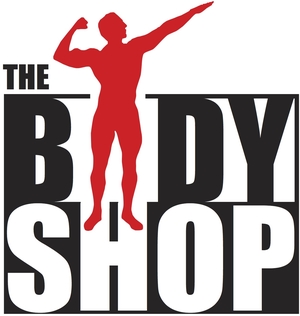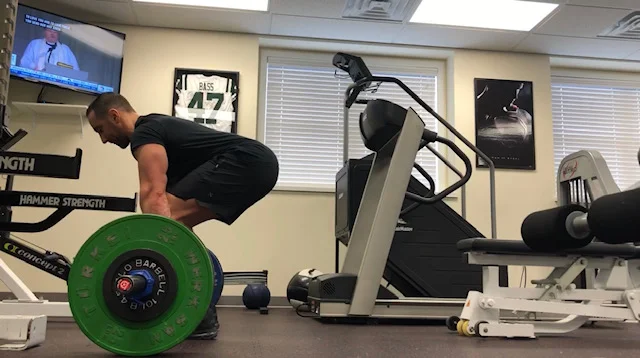When it comes to organizing your workout, there is a method to the madness. Here are some basic principles:
1. Always Start with a Warm Up
Jumping into your workout right from the car is never a good idea. The goal of your warm-up is just what it sounds like, to warm up the muscle. Increasing the temperature of your tissue allows you to increase your range of motion and prevent injury. Your warm up should fit your workout. For example, if you are training legs, your warm-up should target preparing your legs for activity. There are many ways to warm-up prior to your workout. Hitting a stationary bike, stairmaster, or rower for 3-5 minutes can be a good place to start. If you do plan on lifting some heavy weight, also consider conducting 2-3 sets of lighter weight to work up to your goal weight. These lighter warm-up sets can have a positive neuromuscular effect of getting fiber recruited and practicing movement patterns. Prior to your workout is a great time to add in your mobility exercises or foam roll.
2. Compound Movements/BIG Lifts Come First
One way to think about this is to simply to put the most important exercises first, so obviously what you consider to be the most “important” will vary based on your goals. For someone who is putting emphasis on improving their squat, deadlift or bench press strength, these exercises would take priority. If power is the goal, say in a sports performance setting, and athletes are doing lifts like snatches, cleans or jerks –these exercises would come first. As fatigue sets in, the precision with which we do tasks decreases. This is why the more complicated, skill based, lifts should come first. If your goal is just general fitness you would still want to put your “Compound Movements” first because you are going to use the most amount of energy on those. Compound movements are exercises that involve multi-joint, and multi-muscle movements. A squat would be an example of a compound movement because it involves a coordinated movement at the hips, knees, ankles and virtually all muscles of the legs and core to work together. Other examples of compound movements include: Deadlift, Clean and press, Pull-up, Bench, Leg Press
3. Single Joint / Accessory Exercises / Smaller Muscles Come After
While your compound exercises are your “meat and potatoes,” the next group of exercises are like your side dishes. Single joint exercises are more for isolating one muscle group. Think exercises like a seated leg extension, seated hamstring curl, calf raise, bicep curl or dumbbell side raises. This is your opportunity to fine tune your workout to areas you may feel need more work. For example, we often see that individuals may have more dominant quads than hamstrings, this is your opportunity to hit some extra hamstring focused exercises.
4. Consider Adding Unilateral Exercises (Single-sided Exercises.)
Virtually everyone can benefit from adding in unilateral or single sided exercises into our workouts. Single sided exercises are exercises that isolate the right side and the left side –so in other words you do reps on the right and reps on the left. More often than not, once we conduct a single leg exercise like a single leg deadlift or a traditional step-up, chances are it becomes clear that the right side might be stronger, more stable or more balanced then the left side (or vice versa). This allows us to identify and then correct the imbalance making sure the weaker side is getting attention and avoid overusing the dominant side, which you may be doing subconsciously. You will also get an increase in core work because your core helps stabilize yourself during the setup of weight on one side of the body and not the other. Almost every exercise can be modified to become a single sided (unilateral) exercise. Also, keep in mind we recommend always starting with the weak or non-dominant side first and then matching reps with your stronger side. This will help mitigate any imbalances from one side to the other.
5. Add a “Finisher”
Adding a metabolic finisher to end of the workout is a great way to make sure that you’ve really made the most of your workout. Finishers can help increase cardiovascular conditioning and increase fat loss. Finishers aren’t really designed to be easy because you’re most likely already tired from your workout, but you’re forcing yourself to dig a little deeper. If you’re really, really glad that it’s over, you know you did it right. Some simple (but not easy) finishers include:
5 Minute Farmer Walk Carry – Carry a set of weights for 5 minutes. Goal is to not put the weight down. If you have to, rest as little as you can and then continue until the timer hits zero.
1,000 Meter Row (Yikes)
100 Calories on the Stairmaster as fast as you can
Sled Push Ladder – Put one plate on the sled, push it a designated distance, add a second plate, push it the same distance, add a third plate…etc. See how many plates you can add.
100 Pushups in a few sets as possible
6. Does Cardio or Weights Come First?
If you plan on doing both a cardio and a strength workout in the same day, you may not be sure which one to do first. A good rule of thumb here is to do whatever is most important first because you will have the most amount of energy. Some examples of this might be, if you are training for a race, then your run workout should take priority. Chances are you are trying to hit a certain amount of time or distance to your run that is part of a larger training plan. If this is the case, do your run prior to your lift. If you are trying to get stronger, then lifting is your priority, you want to have as much readily available energy for your sets and reps so hit the weight room first and save the cardio for after. If your goal is fat loss, there may be some evidence that says that cardio after weights is better for burning, however, I would say do whatever you’re more likely to adhere to. If you feel like you’re likely to skip the cardio when you’re done with your lift, do the cardio first.

